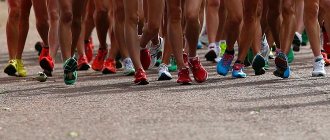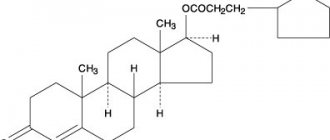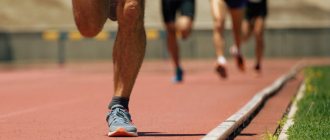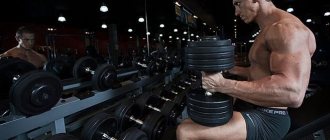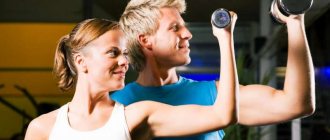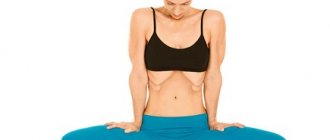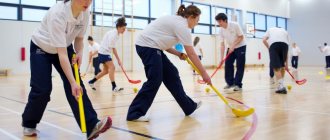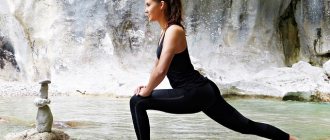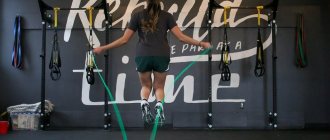Introduction
In the modern world, with the advent of modern household appliances, which have significantly facilitated a person’s work activity, but at the same time his physical activity has decreased.
This reduced human functionality and contributed to the emergence of various diseases. Physical labor creates increased physical stress, so in some cases it can be viewed from a negative side.
The lack of energy expenditure necessary for a person creates a certain discrepancy in the activity of systems and leads to a decrease in immunity and metabolism.
But excessive physical activity is also harmful. A reasonable solution, in this case, would be to engage in health-improving physical education, which helps strengthen the body. Physical culture contributes to the prevention and healing of the body, which is very important for people with various diseases.
Children must be taught to participate in physical education from an early age. At the same time, the correct choice of loads on the body is important; an individual approach must be taken into account.
Physical education should be an integral part of every person's life.
The importance of physical education for the health of students
This article discusses common health problems among students. Regular physical education classes are proposed as a way to improve the health of students, their influence on students and their importance in the educational process is studied.
Key words: physical training of students, physical culture, health problems among students, motivation.
The role of physical training for a person can hardly be overestimated. Sports and physical activity are necessary elements of the normal life of a healthy person. At the same time, they affect not only the physical, but also the psychological state, making a person energetic, self-confident, and disciplined. It is a well-known fact that regular physical exercise has a positive effect on the cardiovascular system, helps strengthen muscles, correct posture and normalize weight, strengthens bones and gives flexibility to joints and ligaments. A person who goes in for sports is less susceptible to various diseases and is more resistant to stressful situations and psychologically stable.
But at the moment in our country there is an acute problem of reduced attention to physical health and sports. And, as a consequence, deterioration in public health. This problem is especially relevant among young people, namely students. “This is evidenced by the appeal of the younger generation to various health authorities with cardiovascular, infectious and other chronic diseases, which are the reasons for the exclusion of young people from a healthy lifestyle and sports. Students, especially at the initial stage of study in educational institutions, are easily vulnerable to acquiring various dysfunctions of the body, as they face various problems in studying and adaptation” [1]. Admission to a higher education institution for students is often associated with a change in place of residence, daily routine and diet, with changes in working and leisure conditions, which can cause significant damage to the psychological and physical state of the student.
In addition, the student’s nervous system is constantly undermined by stressful situations associated with tests, course projects and exams. Also, studies note a significant increase in the number of students who smoke and drink alcohol. Coupled with the problems described above, this can deal a crushing blow, primarily to the nervous system and undermine psychological health. Students who are constantly under stress lose motivation to engage in physical sports and physical activity. Constant problems with daily routine and nutrition have a significant impact on the health of students. Often, students combine studying with part-time work in the evening and at night, to the detriment of their daily routine. Lack of time and energy for cooking entails an increased consumption of semi-finished products and fast food, saturated with animal fats and sugars and carcinogens.
The fight against these problems lies in one solution - physical education, which is an integral part of training in educational institutions. Sports and physical education are a normal and healthy life, which opens up endless opportunities for bringing strengths and talents to life, and not just a healthy lifestyle. But, unfortunately, not all students understand the benefits of these activities. For a better understanding of the benefits of physical education and the best achievement of sports results, it is necessary to form a number of motivations, since not every person can force himself to play sports on his own. The need for movement, the need for physical improvement, the need to maintain and strengthen health are the main reasons for active physical education. It is important that students understand the importance of sports, during which they develop a healthy lifestyle and the ability to eradicate a number of physiological disorders that are associated with dysfunctions of the cardiovascular and other systems.
With the help of physical education and sports, a harmonious, developed personality is created. They help mobilize all the body’s resources to achieve a high goal, increase mental performance and mood. This occurs due to the activation of the central nervous system, oxygen metabolism, increased blood supply to the brain and an increase in the amount of adrenaline and norepinephrine in the blood. Research shows that people who are physically active are able to cope with stress much easier, while people who do not exercise get tired faster, and their concentration and productivity decline faster. For a student, this can be a decisive factor, since it is directly related to stressful educational activities. Physically trained students are more prepared for stressful situations in which it is necessary to use significant mental resources, for example, exams and tests.
Physical exercise and sports contribute to the development and strengthening of discipline, increase the sense of responsibility, and help develop perseverance and determination. It has been proven that physically healthy students are more likely to become leaders and achieve success, both in academic activities and in other aspects of life. Physical education classes teach you discipline, a strict daily routine and the habit of planning your time and moving towards a clearly defined goal. A healthy student is a person who values himself and understands what he wants to achieve. Physical education classes are an integral part of the educational program and are aimed at giving students the skills to independently organize sports activities and use their physical potential. Motivation plays a significant role in these activities. If a student is motivated to engage in physical exercises, then they will only strengthen his strong-willed qualities. Often results can be a good motivation. The desire to achieve the desired result, develop, become healthier, stronger, more beautiful, fosters self-control and perseverance in students involved in sports.
Also, playing sports has a positive effect on the functional state of the respiratory system, blood circulation and immunity. Regular physical exercise is an excellent prevention of diseases such as hypertension, coronary heart disease, and obesity. Research shows that more than half of students have some kind of chronic disease and their number is increasing from year to year. In this case, playing sports turns out to be one of the most effective “medicines” against chronic diseases of various organs and systems. The problem of increasing the number of students with osteochondrosis and arthrosis due to the sedentary and sedentary lifestyle of the modern student is quite relevant at the moment. Regular hard physical exercise helps get rid of these problems.
Drawing a conclusion, we can say that physical education classes can have a huge impact on a student’s health, improve his physical and psychological qualities. But, unfortunately, at the moment there is a problem of motivating students for such activities. The reasons are disorganization, laziness, lack of time, strength, desire, poor organization of the educational process in the discipline of physical education. Every year the health of the younger generation of our country is noticeably deteriorating; some diseases of old age are increasingly appearing in students. Therefore, it is necessary to competently approach the organization of physical education of students and their motivation. One example of motivation is passing the GTO standards, which give students additional bonuses when studying and enrolling. The GTO standards are aimed at improving the physical fitness of students and promoting health. Other methods of motivation may be the introduction of a creative component into the training process, the use of game and competitive methods in organizing training, and a variety of sections for individual sports.
As we see, physical education classes require competent and careful organization and are the most important aspect of training future specialists in higher educational institutions.
Literature:
- Martyn I. A. Formation of motivation for physical education and sports among students // Universum: Psychology and education: electronic. scientific magazine 2020. No. 6(36).
- Ushakova Ya. V. Health of students and factors of its formation // Bulletin of the Nizhny Novgorod University named after. N. I. Lobachevsky, 2007, No. 4, p. 197–202.
- Ermakova E. G. The importance of physical culture and sports in the life of a student // International Journal of Humanities and Natural Sciences, vol. 5, part 1, p. 43–44.
- Filchakov S. A., Chernysheva I. V., Shlemova M. V. Current problems of student health // Advances in modern natural science. -2013.- No. 10 - p. 192.
The role of exercise
Physical exercise affects all muscle groups, ligaments and joints, which become strong, the volume and elasticity of muscles and the speed of their contraction increase.
Intense muscle activity forces the heart to work harder, as well as the lungs and other organs of the body. This increases a person’s functional capabilities and the body’s resistance to adverse environmental influences.
Systematic physical exercise affects the muscles and musculoskeletal system. During physical activity, heat is generated in the muscles, and the body responds with increased sweating.
During physical activity, blood flow increases, the blood delivers oxygen and essential nutrients to the muscles, which break down and release energy. Muscle movements open reserve capillaries, the amount of incoming blood increases and causes an acceleration of metabolism.
The response of the human body to physical activity is the influence of the cerebral cortex on the regulation of the functions of the cardiorespiratory system, gas exchange, metabolism, etc. Exercise enhances the restructuring of the musculoskeletal system and cardiovascular systems, improves tissue metabolism.
Moderate physical activity increases the performance of the heart, hemoglobin content and the number of red blood cells, and increases the phagocytic function of the blood. The work and structure of internal organs are improved, the processing and movement of food through the intestines is improved.
The coordinated activity of muscles and internal organs is under the control of the nervous system, the activity of which is improved under the influence of physical exercise.
If the muscles do not experience physical stress, then their nutrition deteriorates, strength and volume decrease, firmness and elasticity decrease, the muscles become flabby and weak. Restriction in movement and a passive lifestyle contribute to the development of various pathological changes in the human body.
Types of endurance
There are several types of endurance; below we will consider each in more detail.
General endurance is the body’s ability to withstand prolonged loads (work) of moderate intensity, without reducing the efficiency of work and maintaining the body’s performance at the same level. The level of general endurance is based on the aerobic capacity of the human body. This type is a combination of other types of endurance. This species is the most important in human life and is of key importance to physical health.
Special endurance is the ability to work for a long time, characteristic of a specific type of activity.
Special endurance can be classified according to the following characteristics:
- Motor action – jumping endurance.
- Interaction with other abilities - strength endurance.
Specific endurance is not just the ability to perform an exercise for a long time, but also the ability to perform a task with maximum efficiency within a specific mode of action, such as walking, running or swimming.
High-speed – allows the athlete to perform fast movements without breaking technique or fatigue for a long time.
Strength endurance – allows you to perform an action associated with high physical activity for a long time without deteriorating the technique.
Static – the ability to keep muscles tense for a long time.
Dynamic is a type of strength endurance, the ability to perform heavy loads at an average pace for a long time.
Coordination – the ability to repeat complex movements multiple times.
And that's not all types of endurance. They all unite in general endurance, and their groups in special.
For example , the special endurance of an American football player consists of such types as: jumping, coordination, cardiovascular and muscular, dynamic and speed.
Exercise and various organs
The human body consists of a system of organs, each organ performs specific functions. Groups of organs that perform the same functions form organ systems.
The external environment provides the body with the necessary substances for development and vital activity, and at the same time it receives certain irritants in the form of solar radiation, temperature and humidity, as well as industrial harmful effects. These external influences constantly influence the internal environment of the body - homeostasis.
Existence in such conditions is possible only if the body adapts to the influences of the external environment.
In this case, physical exercise can become a kind of regulator that provides control of important processes and maintains the balance of the internal environment. Therefore, physical exercise is a means of maintaining health.
Insufficient physical activity negatively affects the functions of the intercellular space of the human body. This reduces the body's overall defenses and increases the risk of various diseases.
A reasonable combination of work and rest, normal sleep and nutrition, giving up bad habits and systematic physical activity increase the mental, mental and emotional spheres of a person’s life, the body becomes more resilient to various psycho-emotional stress.
A person who leads an active lifestyle can do more work than a person who leads a sedentary lifestyle.
Endurance exercises
All these exercises can be done at home, in the gym or outdoors.
- Running (its various types).
- Burpee (any variety).
- Lunges (with or without weights).
- Exercise "climber".
- Dynamic bar.
- Jumping rope.
- Cycling (long rides or training on an exercise bike).
- Dancing.
- The “ladder” complex (consists of push-ups, pull-ups and crunches).
- Exercises on the coordination ladder.
- Practicing punches on a boxing bag or sparring.
Energy and metabolism
The exchange of energy and substances in the body is manifested in complex biochemical reactions. Nutrients enter the body with food and are broken down in the gastrointestinal tract (GIT). The breakdown products enter the blood and are transported to the cells.
Oxygen enters the blood from the air through the lungs; it takes part in the oxidation process that occurs in cells. Substances that are formed as a result of biochemical reactions are eliminated from the body through the kidneys, lungs, and skin.
Metabolism is the source of energy for all processes occurring in the body. Physical exercise or sports enhances metabolic processes and maintains the mechanisms that carry out metabolism and energy in the body at a high level.
Physical activity and chronic bronchitis
During chronic bronchitis, it is important to learn how to properly resuspend secretions in the lungs. There are special body positions that make this process easier. This disease, unfortunately, requires reducing physical activity to a minimum. An example of an exercise that teaches effective coughing would be, for example, taking a deep breath and exhaling while coughing. In addition, breathing exercises also aim to teach patients how to breathe using the diaphragm.
During chronic bronchitis, you can also perform relaxation exercises. They are designed to strengthen the back, abdomen, buttocks and shoulder girdle. Such exercises are performed in a sitting or lying position, and then standing. During any physical activity with bronchitis, do not strain your muscles (especially your chest). This may lead to difficulty breathing.
Circulatory system
The heart is the center of the circulatory system, which works like a pump, allowing blood to move. Physical training increases the size and mass of the heart, thickening the walls of the heart muscle and increasing its volume increase the performance of the heart muscle.
Regular sports or exercise:
- helps to increase the number of red blood cells and hemoglobin in them, which increases the oxygen capacity of the blood;
- The body's resistance to infectious and colds increases due to increased activity of leukocytes.
Friends, regular readers and guests of the blog about methods of being healthy, we strongly recommend that you lead an active lifestyle, this does not mean that tomorrow you should lift 16 kg weights 10 times, this means that you need to gradually, without sudden loads, increase your activity . An excellent way to do this is to take 30-minute walks in the morning and evening, take 1000 steps a day and every day add another 100 to these 1000 steps.
Problems with teeth are not uncommon nowadays, fortunately there are now many different methods and methods for dental implantation. You can find out how much it costs to install a denture or other dental procedures in specialized clinics, here is one of them www.veronica.ru/docs/implants.html
